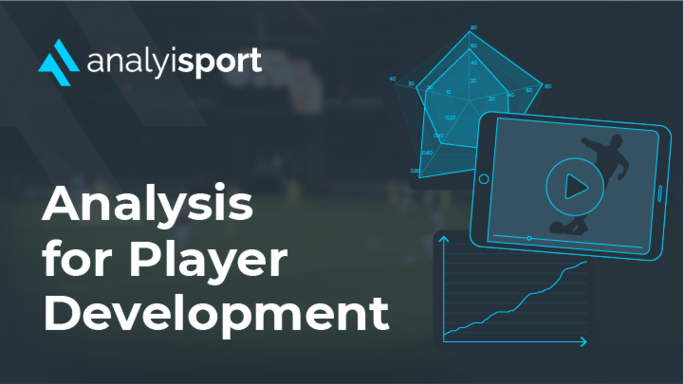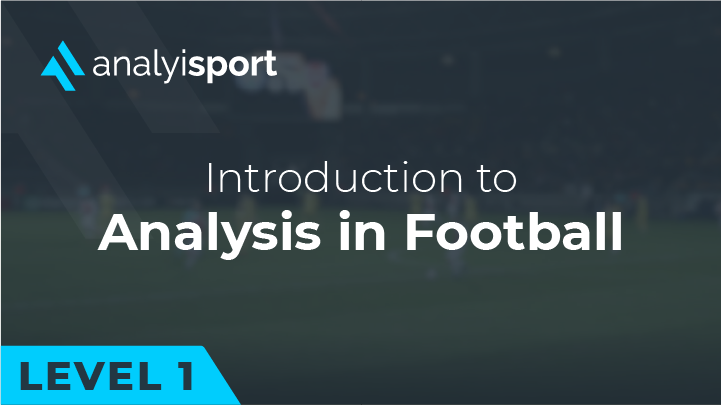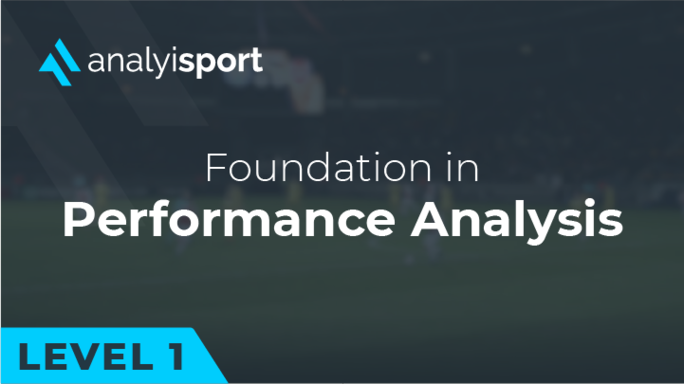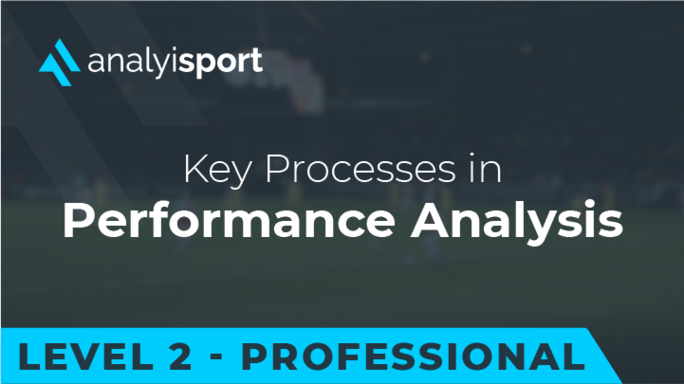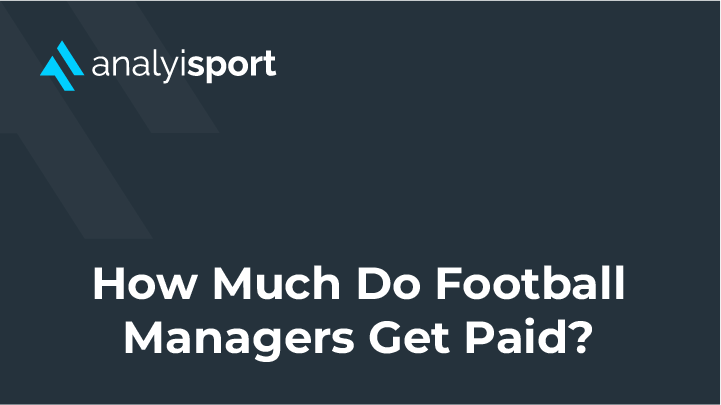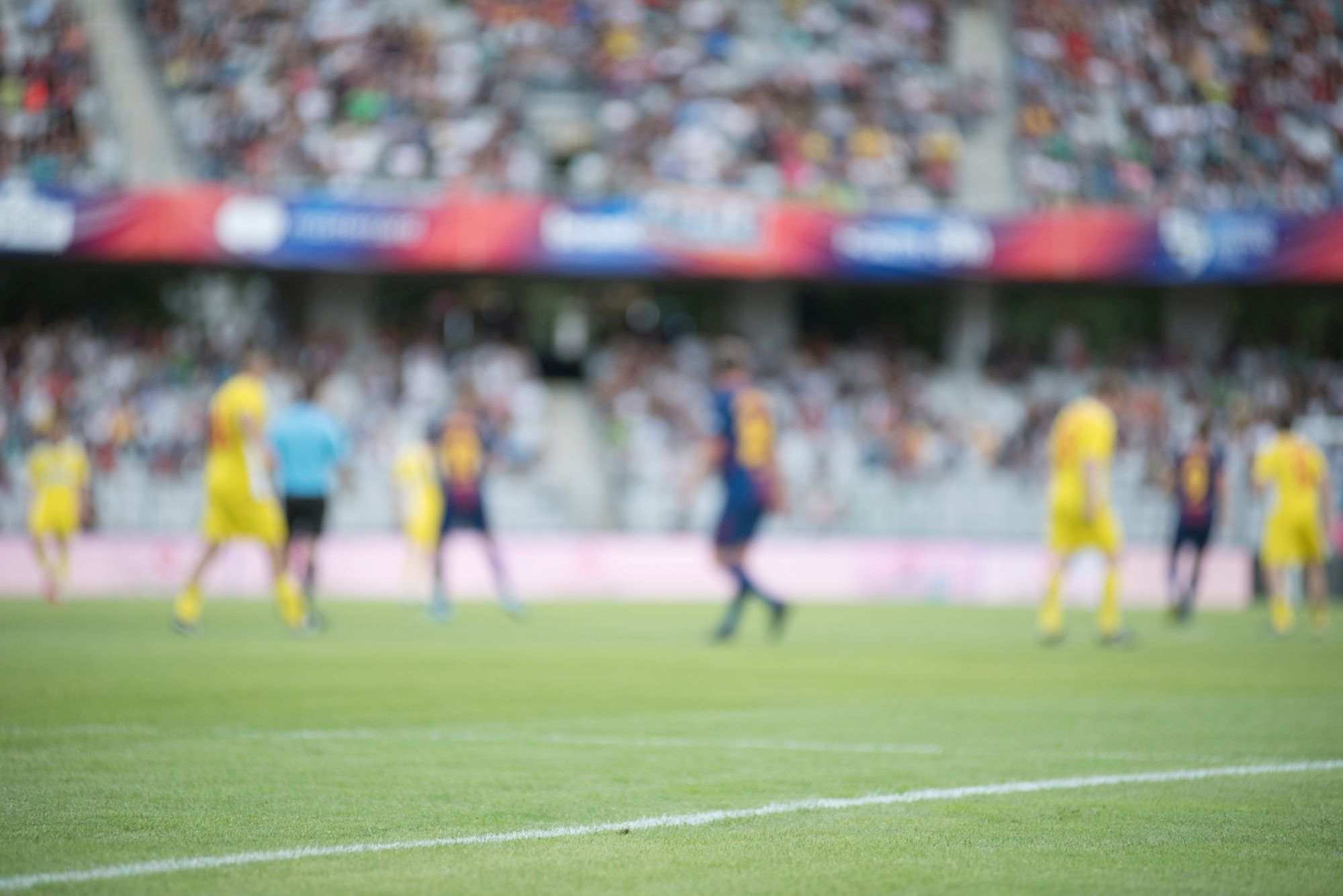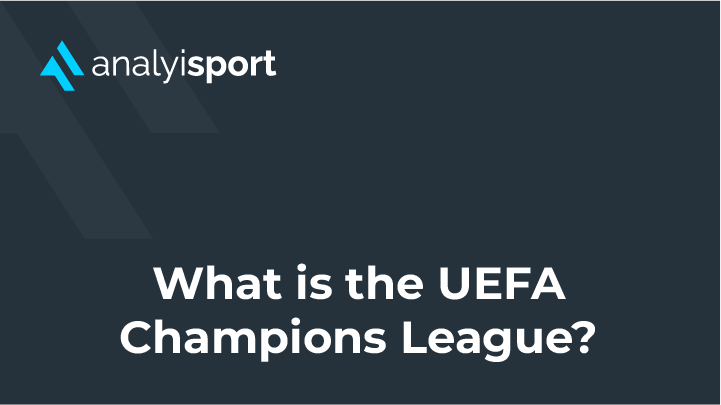The Data Revolution in Non-League Football
Data analysis is changing football, and not only for the big clubs. World-famous sides like Liverpool and Barcelona understandably receive the most attention for their innovative use of data to gain an advantage on and off the pitch. But a lot further down the football pyramid, clubs are also starting to embrace data analysis. And they are doing it their own way.
In the semi-professional National League, the fifth tier of English Football and one step below the Football League, clubs have started to use data in their quests to win promotion and compete against bigger teams in the cup competitions. Players are using apps to improve their performances, fans are fundraising for GPS vests and owners are hiring people with backgrounds in data analysis. They may not have the budgets to match Premier League spending, but tenacious Non-League clubs are finding ways to make the data work for them.
Borrowing Computers
One of the first clubs in Non-League Football to start using data analytics was Forest Green Rovers. The club are very much a small-town club, being based in Nailsworth in Gloucester, a town which has a population of just over 5,000. But they have gained wider recognition in recent years for doing things differently to other teams. They are one of the most eco-friendly clubs in the world and since 2015 they have been officially vegan, serving their fans and players with a match day menu that is completely plant-based.
Another significant step they took in 2015 was hiring Charlie Reeves as the club’s Performance Data Analyst. He had emailed the club’s owner, Dale Vince, to tell him about the match-prediction software he had designed whilst still a student. Vince saw the potential in his work.
At the time, most clubs in the National League would do a little bit of post-match video analysis and look at some simple stats, but that would be the extent of their data analysis. Indeed, for most clubs at that level, this is still the case. The work done by Charlie Reeves at Forest Green was much more sophisticated. Focussing on match analysis, Reeves worked to turn the raw data available from each game into something useful for the manager and coaches.
Reeves received spreadsheets of statistics after each match from the data analysis firm STATS. Building different models to visualise the data, such as maps to show the exact position on the pitch each shot was taken from, he created match reports for the club’s manager and coaches. The important work was not just presenting the stats, but making them relevant to what the coaching team was looking for.
As well as working four days a week for the club, Reeves worked one day a week for Ecotricity, the energy company also owned by Dale Vince. This allowed Reeves to learn from the dozens of business analysts at the company and to store the club’s data on the company’s servers. Ecotricity provided Reeves with IT capabilities that would have otherwise been unavailable at a Non-League club.
But it took time for the data analysis to have an impact. Reeves had to develop the tools he used and build up his databases. A change of management also helped. When Mark Cooper replaced Ady Pennock as first-team manager, he was much more receptive to the use of data. Working in partnership with the management allowed Reeves to focus on the data that was most relevant to the needs of the team and their style of play.
In the spring of 2017, Forest Green Rovers beat Tranmere Rovers 3-1 at Wembley Stadium in the National League play-off final, earning promotion to the Football League for the first time in their history. For a club formed in 1889, this was an achievement that was a long time coming.
The same year, Charlie Reeves spoke about the club’s use of data and claimed, ‘There are teams in the Premier League that don’t go to the level of detail and sophistication we do.’ Such an assertion may at first glance seem exaggerated and perhaps even a little self-aggrandising. Surely the work being done at a small club like Forest Green Rovers, playing in the fifth tier of English football, was not comparable to some of the biggest clubs in the sport?
Everton thought otherwise. They were so impressed by his work in Non-League football that after Forest Green clinched promotion, the Premier League club signed Charlie Reeves to be their First Team Data Analyst. In just two years at the National League side, Reeves had helped them achieve promotion and built up a sophisticated system for data analysis that impressed those at the highest level of the game.
Using Smartphone Apps
Two clubs won promotion from the National League in 2017. One was Forest Green Rovers. The other was Lincoln City. That season Lincoln also reached the quarter finals of the FA Cup, beating teams including Ipswich Town, Brighton and Hove Albion and Premier League Burney on their cup run. They eventually lost to Arsenal.
Lincoln’s use of data was not as sophisticated as Forest Green’s, but they made the most of affordable technology. Lincoln’s Performance Analyst, Glenn Skingsley, and the coaching team led by the Cowley brothers used software created by Hudl to give them an advantage over their promotion rivals and compete against much bigger sides in the FA Cup.
Using the software, the coaching team were able to upload videos of the club’s matches and break down the footage for each individual player. The coaches could annotate clips and create playlists which focussed on parts of the game each player did well or needed to work on. This meant that although they were not able to reproduce the multi-camera recordings of every match that are standard in the Premier League, they could simply and effectively analyse past performances.
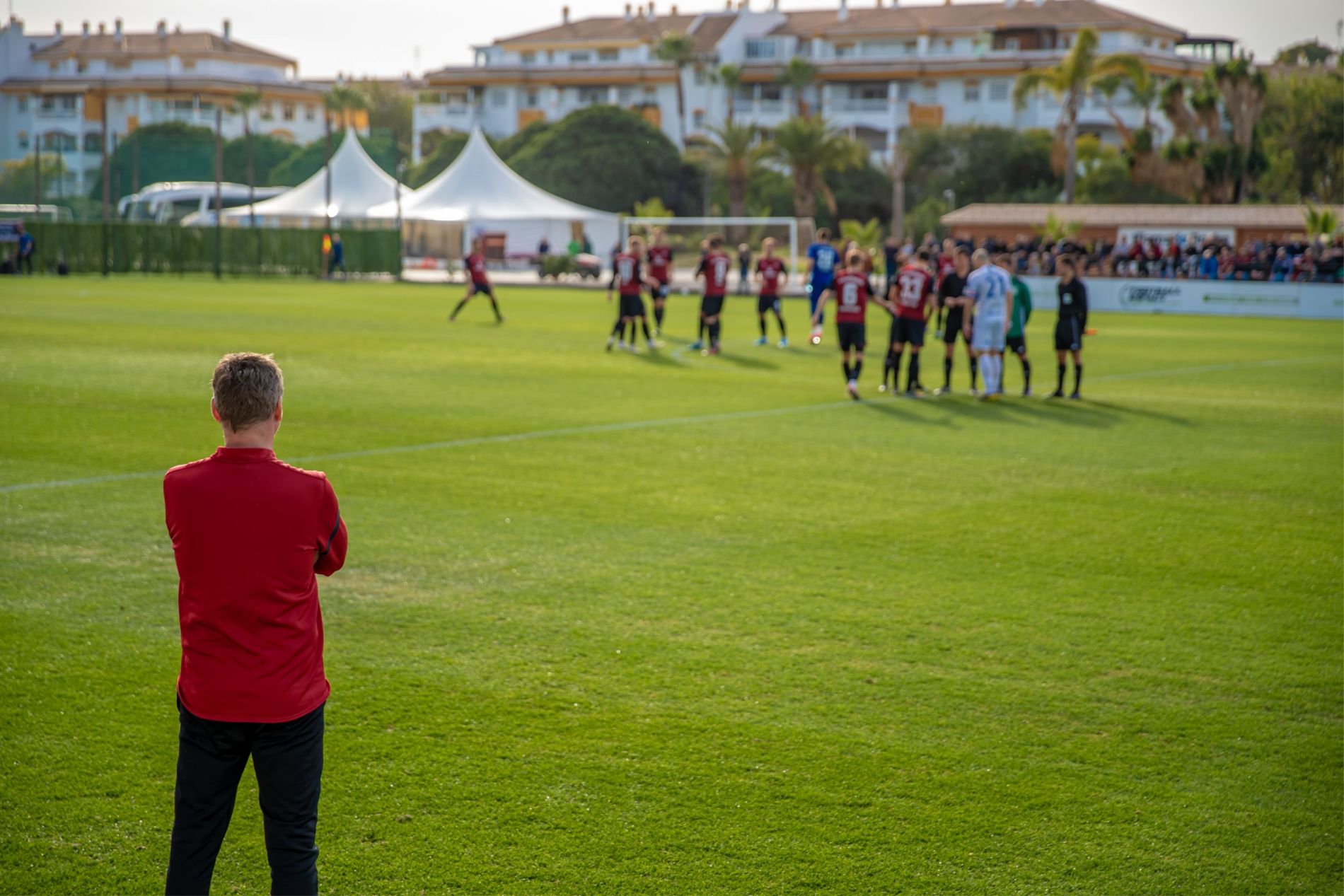
Each player had the app on their own smartphone so they could watch the footage and use a chat function to discuss the clips with the coaches. The app also allowed the coaches to see if players had watched a clip and for how long they viewed it. Being able to use their phones rather than having to invest in new and expensive equipment made Hudl an economical alternative to the expensive level of analysis that bigger clubs can afford.
Fundraising for GPS Vests
One example of the expensive equipment clubs can use are GPS vests. The vests are now a staple of top-flight football, worn under the shirts of players during the match and on the training field to gather data about their speed, distance covered and position on the pitch. This data is important both tactically for the team and for understanding each individual player’s performance level and fitness, making the vests an essential part of the data revolution in football.
The data offered by GPS vests is invaluable, but for clubs on very limited budgets they can be an expensive purchase. Without billionaire owners or large incomes from TV rights and sponsorship, Non-League clubs are finding alternative ways to raise funds for buying the latest data-gathering technology.
One example is Dover Athletic. In November 2019, they received a £4,000 donation from the Dover Athletic Supporters’ Club, allowing the management team to purchase 20 GPS vests from Catapults to track their first-team players during games and training. £4,000 may be a drop in the ocean for many clubs, but at a lower level this kind of investment is a significant sum. That fans were prepared to fundraise to pay for the GPS vests shows how crucial the technology is to the modern game.
Receiving the donation, Dover first-team coach Darren Hare explained, ‘It is so important to know if we working the lads too hard or indeed hard enough during training, so the average workload statistics will help assess how we can help individuals prepare for matches and recover properly.’
At all levels of football, fitness is crucial, but avoiding injuries takes on an extra importance in Non-League football where squad sizes are generally smaller than their top-flight counterparts. Hartlepool United may not have a team of data scientists, but the use of GPS vests in matches and on the training pitch has helped them to keep players fit.
Before their FA Cup fourth qualifying round tie against Ilkeston Town in October 2020, the Hartlepool manager, Dave Challinor, announced that striker Rhys Oates would likely miss the game as a precaution to prevent serious injury. Challinor revealed that each week in training, the coaches try to get each player to reach at least 90% of their normal top running speed. When Oates attempted to reach his top speed that week, ‘The data was showing Rhys was at about 86, 87%.’[3] As a result of this data, gathered from the GPS vests, the club identified that he may have a problem with his hamstring and so could rest him to avoid a more costly long-term injury.
Having a particular exercise in training to measure top speed means that a club can collect this important data directly and without the need for an expensive team of data scientists to wade through the statistics.
Investing in Data
Not all Non-League clubs operate on such tiny budgets that they need fundraising from their fans to afford GPS vests. Local businessman Mark Stott bought Stockport County in early 2020 and hired Simon Wilson as Director of Football. Together they have set about transforming the club, making it fit for the modern game. Modernising the club’s use of data analysis is at the heart of this.
The emphasis on data is unsurprising given Simon Wilson background. He has previously worked for Prozone, one of the most successful companies at providing performance analysis services in football. His background in data also includes a stint as Performance Analyst at Southampton. When he was appointed to the role in 2002, he was only the second full-time analyst to be employed by an English football club. During the early days of data analysis in football there was still a lot of scepticism about its effectiveness. Harry Redknapp was one of the managers during Wilson’s time at the club. After one defeat to Luton in 2005, a nonplussed Redknapp told Wilson, ‘I’ll tell you what, next week, why don’t we get your computer to play against their computer and see who wins?’[4]
That early mistrust of data in football has largely been overcome. Wilson left Southampton to become Head of Performance Analysis at Manchester City and a football consultant to the Premier League and UEFA. Now at Stockport, he is helping the club to follow in the footsteps of the bigger clubs he has worked for.
Although the club only has one Performance Analyst, Sean O’Callaghan, they have invested in technology from Wyscout, InStat, Twenty First Group and Metrica to gather, analyse and present data. Having a rich owner means that they can use some of the same technology that is used by clubs higher up the football ladder. Wilson’s reasoning is that to get ahead, a club needs to build itself off the pitch in the mould of a bigger club: ‘Why wait until you are a Championship team to operate like a Championship team? Surely, the difference between a National League team and a Championship team is the player quality, but it should not be the organisational quality.’[5]
Free Software
Although they may be richer than other clubs in Non-League football, Stockport are certainly not investing the kind of sums that Manchester City or Liverpool invest. For example, they use a lighter, less detailed and more affordable version of the Metrica software than the elite clubs.
Among Metrica’s first clients were top Spanish clubs such as Villarreal and Barcelona, clubs that challenge for major trophies and expect to qualify for continental competitions. However, the company is also interested in making its technology available to those lower down the football pyramid with much smaller budgets. As well as an Elite Plan and a cheaper One Team Plan, the company also offers a basic free service which was launched in November 2020.
The free service allows amateur teams and coaches to use some of the same tools that the top professionals use to analyse the performances of players on and off the pitch. Videos of games can be recorded using whatever equipment a club might have, whether that is a phone, a handheld camera or a drone, and uploaded. The software can then be used to analyse the team’s performance and provide a simplified version of the work a team of highly paid data analysts would supply at a top club.
What Next?
This type of data analysis is never going to be as sophisticated or as innovative as the work done at the very biggest clubs. The best data analysis requires a level of investment that is beyond most football clubs. However, what the likes of Forest Green Rovers and Stockport County have shown is that there is a growing role for data analysis at a lower level.
Metrica’s introduction of a free level to their software is a sign of the way the technology used in data analysis is trickling down from the top. It is unlikely that clubs outside the major leagues are ever going to be able afford to hire more than one or two performance analysts and buy the most up-to-date technology. But versions of the technology are becoming more and more affordable as the companies involved realise there is a market among smaller clubs for their services.
The story of Charlie Reeves, hired by Everton after his innovative work as a performance analysist at Forest Green Rovers, shows that young and talented people are taking their chance to successfully change things for the better in Non-League football. Similarly, the hiring of Simon Wilson as Director of Football by Stockport shows that clubs at that level are serious about bringing in data expertise.
As data continues to transform football at the highest level, its impact also continues to grow among smaller clubs. The increasing affordability of the software is likely to mean that further and further down the football ladder, from professional to semi-professional to amateurs playing Sunday League, the use of data is going to keep on expanding. Data is not just for those at the top.
Related Courses:
Share this article
Our Learning Pathways
AnalyiSport is for everyone who is passionate about analysis in football. Where are you in your development journey?
Become a Football Scout
As more clubs than ever look to build data into their recruitment process, an understanding of recruitment analysis is your ticket to success in the game.
Related Articles
Our team provides news and insights from the cutting edge of football analysis.
